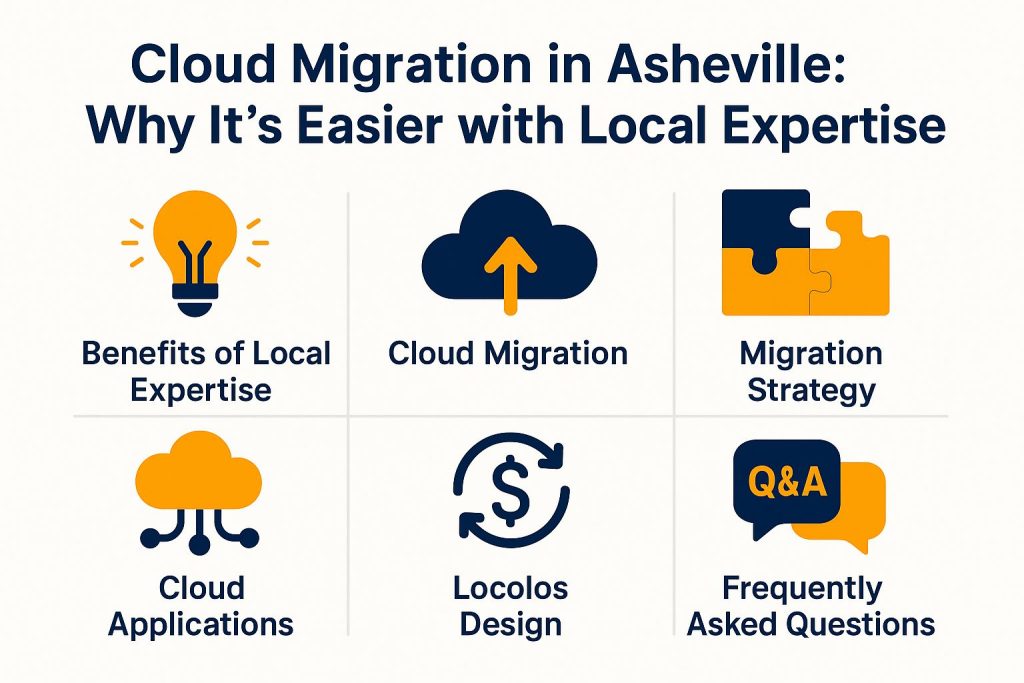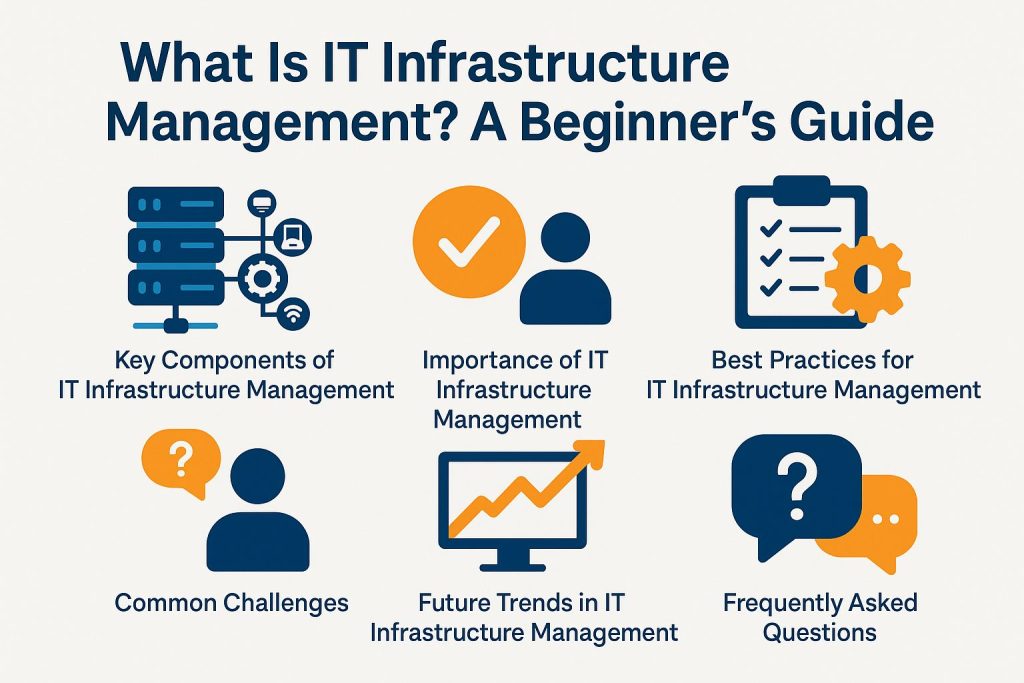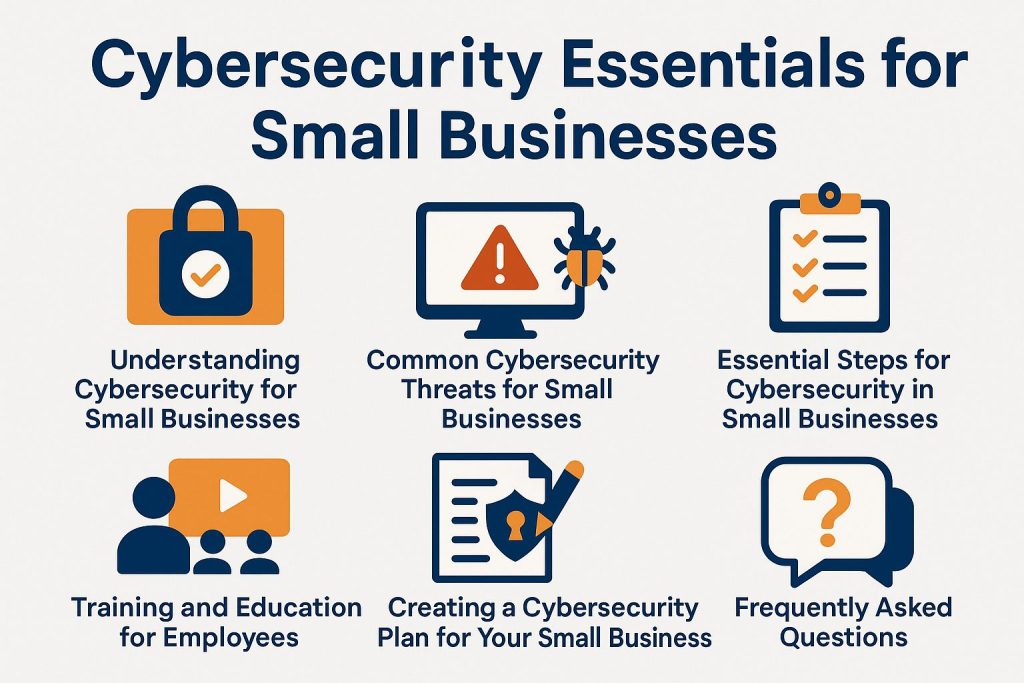Cloud Migration Checklist: A Step-by-Step Guide for Businesses
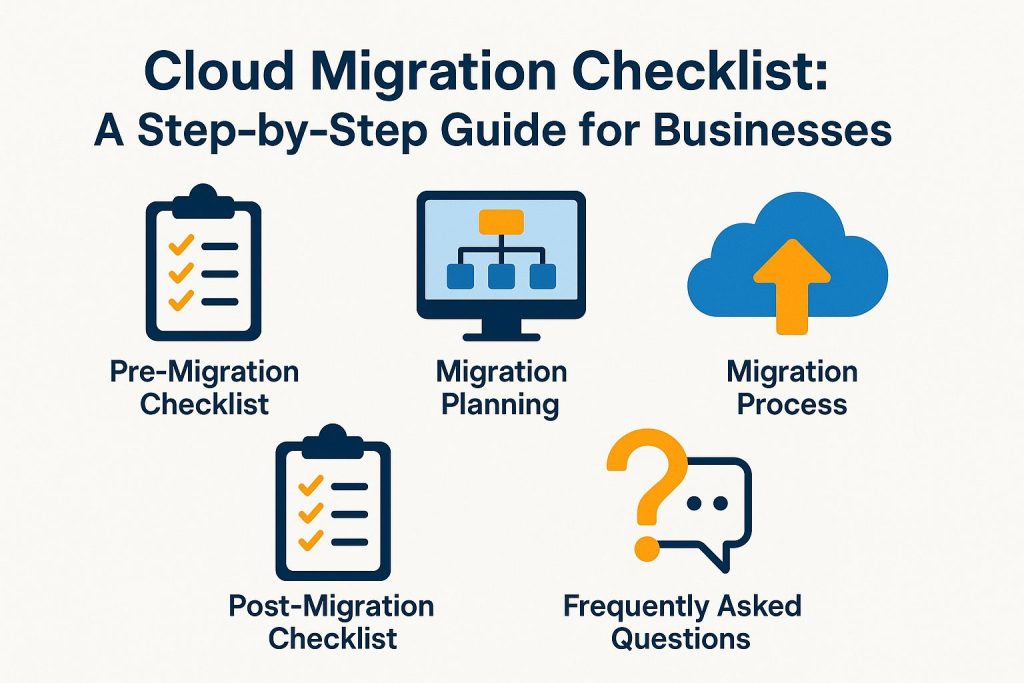
Today, cloud migration is crucial for businesses. It enhances operational efficiency, cloud readiness, and scalability. This checklist outlines essential steps for migrating infrastructure and applications to the cloud. It begins with assessing the current setup and defining business objectives, followed by selecting the appropriate cloud service provider and executing the migration. Each section provides insights for a smooth transition. It ensures data integrity and compliance. Additionally, the checklist includes post-migration tips. These tips help maintain security, disaster recovery, and optimize cloud resources for continuous improvement. This comprehensive guide serves to elevate the cloud migration journey for organizations.
Explanation of Cloud Migration and its Benefits
Cloud migration is the process of transferring data and applications from on-premise IT to cloud services. This may include public, private, hybrid, or multi-cloud strategies. This transition offers many benefits. These include enhanced scalability, improved operational efficiency, and better cost management.
Additionally, cloud migration can lead to better data security and compliance with regulatory standards, ultimately resulting in a more resilient and agile IT architecture.
One of the most compelling advantages of cloud migration is its potential for significant cost reduction. By transitioning to the cloud, businesses can reduce hardware expenses, minimize ongoing maintenance costs, and optimize resource allocation, allowing them to reallocate financial resources to core business initiatives.
Furthermore, cloud service providers offer enhanced security measures. They protect against data breaches and safeguard sensitive information. The role of cloud architecture in business continuity and disaster recovery is another critical aspect; it enables organizations to recover swiftly from disruptions, ensuring that essential processes remain uninterrupted.
This approach strengthens resilience and fosters innovation. It helps businesses adapt quickly to market changes and enhances their cloud ecosystem.
Pre-Migration Checklist
A pre-migration checklist helps businesses facilitate smooth cloud migration. It includes data classification and risk mitigation strategies.
This checklist enables organizations to systematically evaluate their current IT infrastructure, identify potential risks through risk assessment, and develop a robust cloud strategy.
By assessing workloads, checking application compatibility, and ensuring compliance, companies can prepare for successful cloud adoption. This reduces downtime and disruptions.
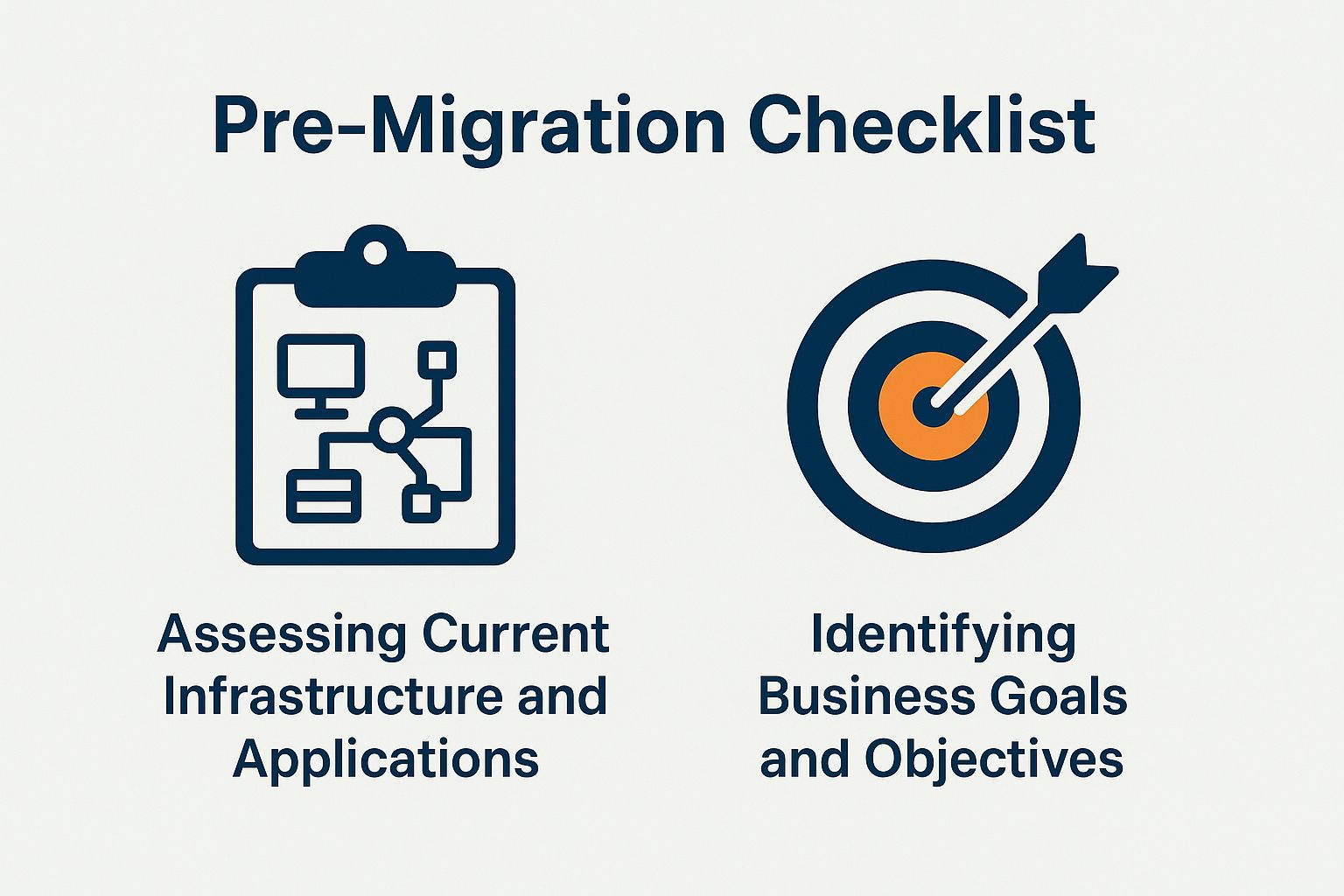
Assessing Current Infrastructure and Applications
Assessing the current IT infrastructure and applications represents a critical step in the cloud migration process, involving network configuration and vendor management. It is essential for businesses to conduct a thorough analysis of their legacy systems and existing workloads to determine what can be migrated, what should be modernized, and what may need to be decommissioned. This assessment clarifies application dependencies. It ensures all components function well after migration to the cloud.
A robust evaluation not only identifies which applications are crucial for daily operations but also highlights potential roadblocks that could impede a smooth transition. Understanding these underlying dependencies is paramount, as they may significantly impact the performance optimization and functionality of applications post-migration. Recognizing the intricacies of integration between systems enables organizations to develop a strategic plan that mitigates risks associated with outdated technology.
By prioritizing this evaluation, businesses can enhance their migration strategy, infrastructure as code, leading to a more efficient and successful transition to cloud platforms.
Identifying Business Goals and Objectives
Clear business goals and objectives are essential for successful cloud migration and governance. Aligning migration with business outcomes helps organizations leverage cloud services. This enhances efficiency, reduces costs, and improves user experience.
These objectives create a coherent cloud strategy. It prioritizes impactful use cases and aligns with stakeholder expectations.
Measurable and achievable goals act as a blueprint for cloud adoption. They help project teams focus on critical milestones and deliverables. Tracking progress against established benchmarks allows timely adjustments. This reduces risks and maximizes resource use. Ultimately, this disciplined approach not only strengthens the cloud strategy but also positions organizations to achieve sustainable growth and innovation in an evolving digital landscape.
Effective Migration Planning
Effective migration planning is essential for a successful cloud transition. It includes selecting a cloud provider and creating a detailed migration plan. Organizations must conduct a detailed cost analysis. This helps understand the financial implications and determine budget allocations. By establishing a clear roadmap, businesses can ensure that the migration process is organized, thereby minimizing risks and disruptions to operations while enhancing overall project management and team collaboration.
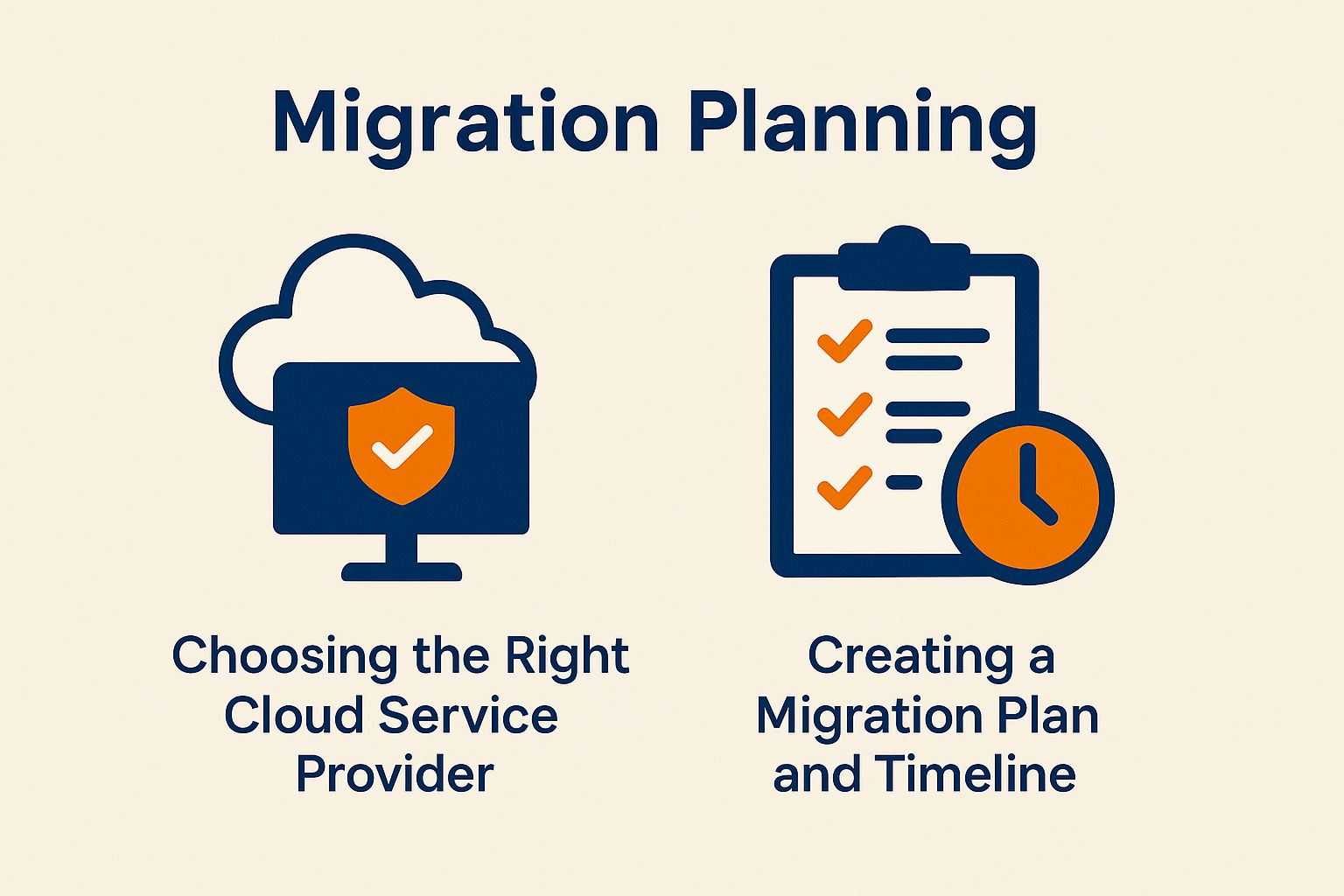
Choosing the Right Cloud Service Provider
Choosing the right cloud service provider is crucial in the migration process. It affects the services received, scalability, and performance optimization. Organizations should conduct comprehensive vendor evaluations based on key factors such as service level agreements (SLAs), scalability options, and cloud security measures. By meticulously assessing various cloud providers, businesses can ensure that their selected partner aligns with their objectives, budgetary constraints, and compliance requirements.
It is essential to evaluate not only the technical capabilities of a provider but also the reliability, cloud literacy, and consistency of their services. Performance metrics, including uptime guarantees and response times, are vital indicators of a provider’s capacity to meet operational demands. Robust support systems are important, especially during critical incidents. A well-defined SLA, outlining responsibilities and penalties, is crucial for ensuring accountability, service level agreements, and transparency.
In today’s dynamic business landscape, organizations that prioritize these criteria will be better positioned to make informed decisions, ultimately enhancing their operational efficiency, business objectives, and promoting growth.
Creating a Migration Plan and Timeline
Creating a comprehensive migration plan and timeline is essential for systematic cloud adoption, ensuring that all phases of migration, migration tools, and migration strategy are organized and executed efficiently. This plan should outline specific project management tasks, establish a timeline for each phase of the migration, including change management protocols, and address user acceptance testing to assist staff in adapting to new systems.
By establishing clear milestones, businesses can monitor progress, testing procedures, and make necessary adjustments to meet their objectives.
To develop an effective migration strategy, it is crucial to conduct a thorough assessment of existing infrastructures, data backup, and identify the resources required at each step. Engaging stakeholders early enhances buy-in and promotes collaboration across teams.
The importance of change management cannot be overstated, as it helps mitigate resistance and fosters a culture of support surrounding new technologies.
Providing user training resources equips employees with the skills to navigate the new cloud environment confidently. This holistic approach not only facilitates a smoother transition, and performance benchmarks, but also establishes a foundation for long-term success in a cloud-enabled future.
Migration Process
The migration process is structured. It helps transition applications and data to the cloud. Use a step-by-step guide and best cloud practices to manage it.
This guide gives businesses a framework. It helps with workload migration, application migration, technical documentation, and service migration.
By following a systematic approach, organizations can reduce risks. They can also optimize cloud solutions and improve readiness during the transition.
Step-by-Step Guide for Executing the Migration
A step-by-step guide helps businesses with cloud migration. It includes migration phases to navigate the process. The guide outlines distinct migration phases, allowing organizations to effectively monitor progress, implement incident response strategies, and utilize migration tools as needed.
By adhering to this structured approach, companies can streamline their migration efforts while minimizing potential disruptions to their operations.
The initial phase is preparation. Companies assess their infrastructure, define objectives, estimate costs, and identify resources.
Next is the execution stage. This requires careful implementation of the migration plan. It includes data transfer, application adjustments, system integration, and network configuration. A critical component throughout this process is the use of monitoring tools to track performance metrics, cloud optimization techniques, and detect any anomalies.
After migration, organizations must conduct a post-migration review. This evaluates system functionality and addresses issues from the transition. Implementing a robust incident response plan at each of these steps is essential for mitigating risks and ensuring a smooth transformation.
Post-Migration Checklist
The post-migration checklist is crucial. It confirms that all migration components are done effectively. It also ensures that the cloud environment is secure and compliant.
This checklist should encompass procedures for verifying data integrity, evaluating cloud security protocols, and ensuring adherence to regulatory standards.
Furthermore, it is essential to identify optimization strategies to enhance cloud performance and improve IT resource allocation.
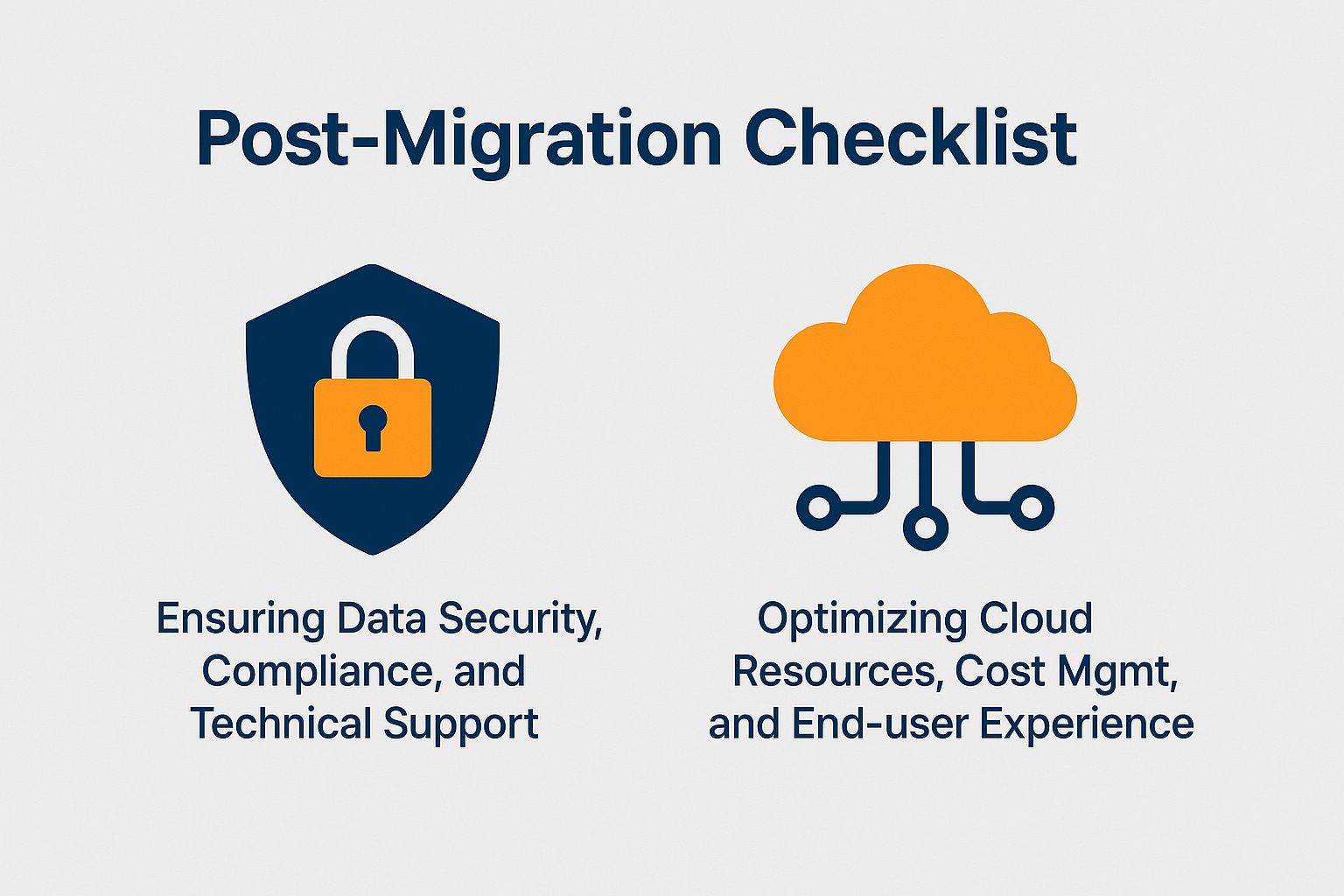
Ensuring Data Security, Compliance, and Technical Support
Ensuring data security and compliance is a critical concern for businesses following their migration to the cloud. Organizations are required to implement stringent cloud security measures and establish robust data governance protocols to protect sensitive information. Adhering to regulatory compliance standards helps companies mitigate risks and preserve their reputation while maximizing cloud technology advantages.
This includes adopting advanced encryption techniques and conducting regular audits to find vulnerabilities. While cloud providers often emphasize transparency, it is essential for organizations to perform due diligence by reviewing vendor security practices to ensure alignment with industry regulations such as GDPR or HIPAA.
By establishing a comprehensive framework that includes identity management, access controls, and incident response strategies, businesses can enhance their security posture. Continuous training and awareness programs for employees are vital, as human error remains a leading cause of data breaches.
Ultimately, following these governance practices builds trust among stakeholders. It helps organizations use cloud capabilities confidently.
Optimizing Cloud Resources, Cost Management, and End-user Experience
Optimizing cloud resources and effective cost management are vital for businesses aiming to fully leverage the advantages of cloud migration. By utilizing cloud scalability features, organizations can dynamically adjust resources according to workload demands, while performance metrics assist in tracking efficiency and informing resource allocation strategies.
Prioritizing optimization helps companies reduce costs and improve operational efficiency in their cloud environments.
Strategies such as leveraging SaaS, PaaS, and IaaS models:
- Rightsizing instances
- Employing serverless computing
- Leveraging reserved instances
They significantly improve cost-effectiveness. Advanced monitoring tools help organizations analyze performance metrics in real-time. This allows them to respond quickly to demand changes.
This approach promotes resource efficiency. It also helps businesses make informed decisions about future cloud technology investments. Understanding the technical and financial aspects of cloud resources helps with strategic planning. This supports sustainable growth.
Frequently Asked Questions
What is a cloud migration checklist?
A cloud migration checklist is a step-by-step guide that outlines the necessary tasks and considerations for businesses to successfully move their data and applications to the cloud.
Why is a cloud migration checklist important for businesses?
A cloud migration checklist helps businesses plan and execute their move to the cloud in a structured and organized manner, reducing the risk of any potential issues or downtime.
What are the benefits of using a cloud migration checklist?
Using a cloud migration checklist can help businesses save time and resources by ensuring that all necessary steps are taken and potential challenges are addressed before the actual migration process begins.
What are some common items on a cloud migration checklist?
Some common items on a cloud migration checklist include assessing current infrastructure, selecting a cloud provider, planning for data transfer and integration, testing and verifying the migration, and establishing a post-migration plan.
How do I create a cloud migration checklist for my business?
To create a cloud migration checklist, research reliable sources and consult experts. Tailor the checklist to fit your needs and goals.
Is there a specific timeline for completing a cloud migration checklist?
The timeline for completing a cloud migration checklist varies by business size, complexity, and migration scope. It is important to allow enough time to thoroughly plan and test the migration to avoid any potential issues or downtime.
